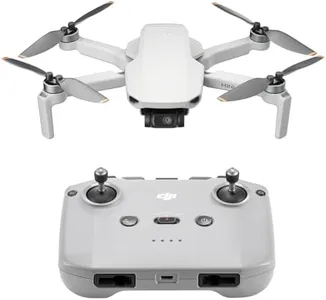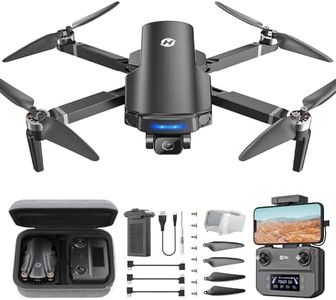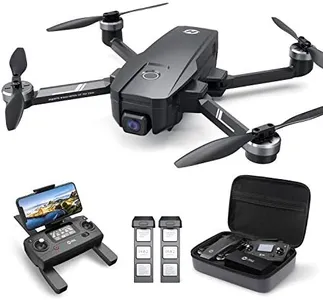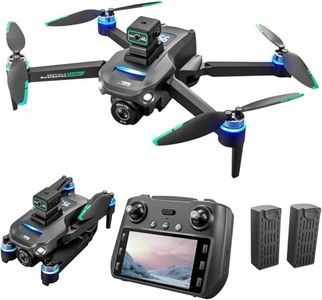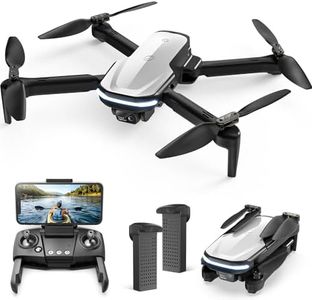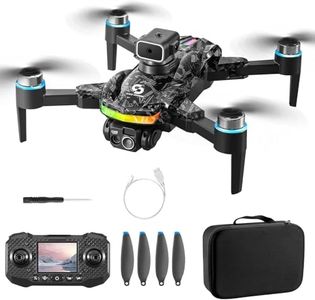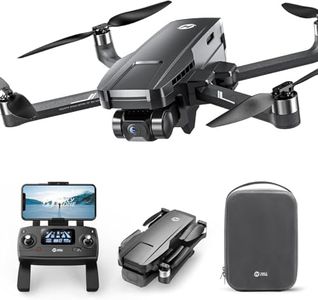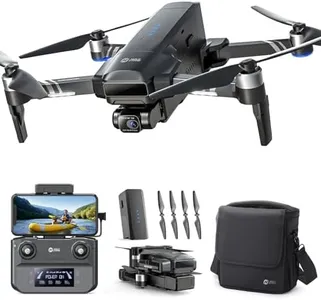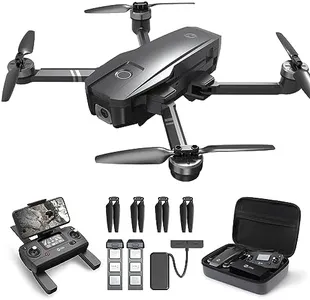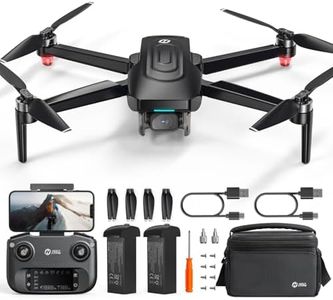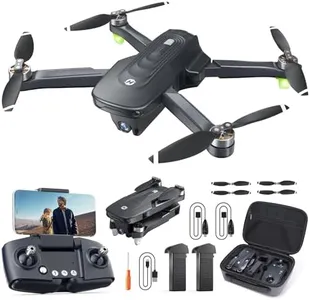We Use CookiesWe use cookies to enhance the security, performance,
functionality and for analytical and promotional activities. By continuing to browse this site you
are agreeing to our privacy policy
10 Best Drone With Camera
From leading brands and best sellers available on the web.By clicking on a link to a third party's website, log data is shared with that third party.
Buying Guide for the Best Drone With Camera
Choosing a drone with a camera can be an exciting process, but it requires considering how you plan to use it. Are you interested in capturing family photos, exploring landscapes, filming sports, or maybe practicing aerial photography as a hobby? Thinking about your intended use will help you focus on the most important features. Before buying, make sure to check local regulations regarding drone flight, and consider starting with a simpler model if you're a beginner. The right drone will balance image quality, ease of use, and flight capabilities to suit your needs.Camera Resolution (Megapixels/Video Quality)Camera resolution tells you how detailed your photos and videos will be. It's usually measured in megapixels for still images and as frame size (like 1080p or 4K) for video. Lower-end models may have resolutions under 12MP and shoot 720p or 1080p video, which can be fine for casual use or social media. Moving up, mid-range drones often have 12-20MP cameras and offer 4K video, making them suitable for hobbyists looking for clearer images and smoother footage. Advanced models can shoot in higher resolutions and have larger sensors, ideal for serious photographers or content creators. Decide what's enough for your use: social posts may need less, but printing large photos or professional videos require higher specs.
Flight TimeFlight time is how long the drone can stay in the air per battery charge. Entry-level drones might fly for 7-15 minutes, mid-range options often achieve 20-30 minutes, and high-end models can last even longer. Shorter flight times mean more frequent battery changes and can be frustrating if you're far from home or doing longer shoots. If your needs are simple, less flight time may be adequate, but for exploration or extended filming, aim for models with longer flight times and consider buying spare batteries.
Gimbal StabilizationA gimbal is a mechanical system that stabilizes the camera, keeping your footage smooth even when the drone moves or shakes. Drones without a gimbal may have 'jelly' or shaky video, which can be distracting. You’ll find 2-axis gimbals on simpler, lighter models, which stabilize side-to-side and up-and-down motion, while 3-axis gimbals offer full stabilization for professional-looking results. If your goal is casual filming, a simple gimbal may suffice, but for quality video, especially in windy or dynamic conditions, opt for models with better stabilization.
Range (Control Distance)The range tells you how far the drone can fly from the controller before it loses signal. Hobby drones may only go a few hundred meters, while advanced drones can fly several kilometers away. Think about where you'll be flying—if you’re exploring wide outdoor spaces or want impressive landscape shots, longer range is useful. For backyard flights or close-up filming, a shorter range is enough and generally easier to manage for beginners.
GPS and Intelligent Flight ModesGPS lets the drone know its position, helping with stable hovering and features like automatic return to home if the battery is low or signal is lost. Intelligent flight modes, often powered by GPS, include functions such as follow-me, orbit, and waypoints which simplify creative shots. If you're new to drones, GPS and these features can help you fly more confidently and safely, while also allowing you to focus on getting the shot rather than constantly steering.
Obstacle AvoidanceObstacle avoidance is a safety feature that helps the drone detect and prevent collisions with objects. Basic models may not have this, which means you need to be very careful while flying. Mid to high-end models feature sensors that let the drone 'see' and avoid obstacles in front, below, or even all around it. If you'll fly indoors, through trees, or in tricky environments, obstacle avoidance provides peace of mind and reduces the risk of accidents.
Portability (Foldable Design and Weight)How easy a drone is to carry matters, especially if you want to travel, hike, or just transport it easily. Some drones have foldable arms or bodies, making them compact enough for a backpack, while others are larger and suited for dedicated carrying cases. Lightweight models are easier to carry and may not require FAA registration in some countries, but heavier drones can be more stable in windy conditions. Choose based on whether portability or robust performance matters more for your activities.



